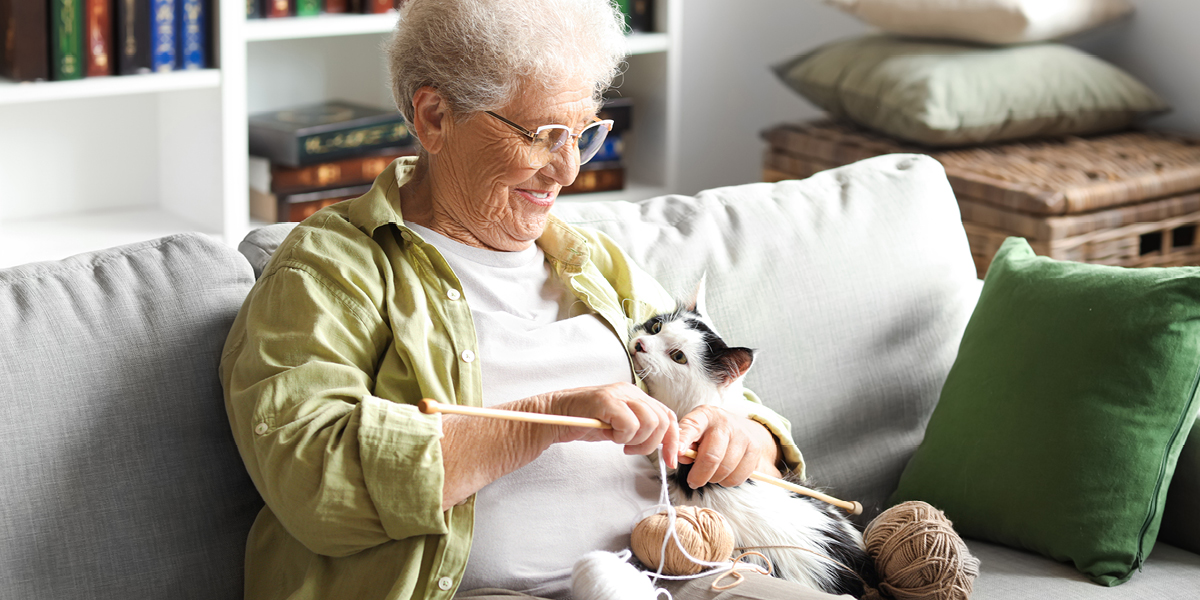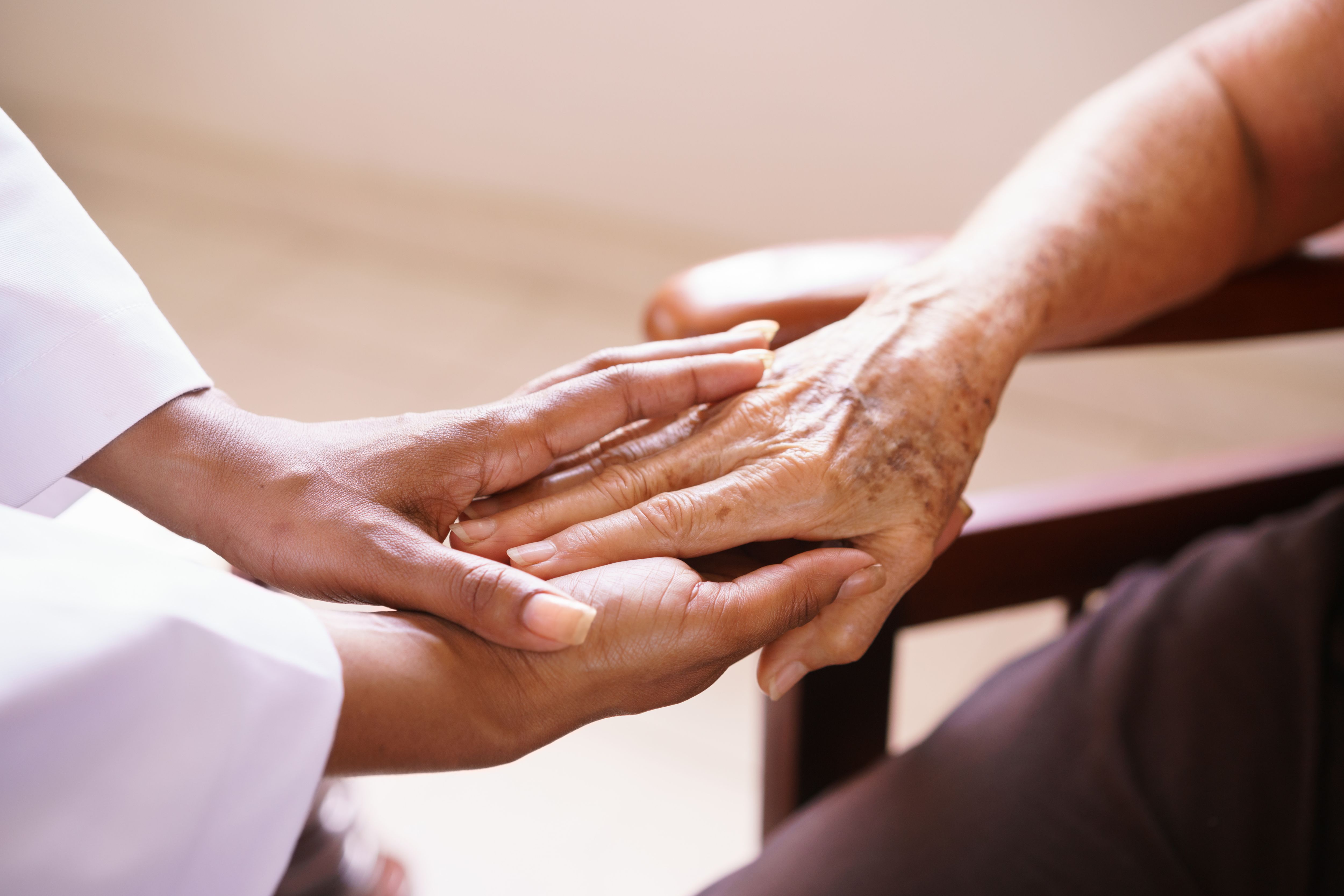With aging comes all types of changes, especially with moods and emotions. For seniors who may struggle with physical decline, loneliness, or loss, feeling blue or sad is not an unusual occurrence. At certain times of the year, especially winter, moods may change due to seasonal affective disorder (SAD), a form of depression closely related to the seasons. While most people think of SAD during the winter, this disorder can happen any time during the year, even summer.
Top 3 Signs of Seasonal Affective Disorder in Seniors & How to Spot Them
Medically Reviewed by Erin Young, MSN, NEA-BC

What is Seasonal Affective Disorder (SAD)?
A form of depression, SAD occurs more during fall and winter when the days are shorter and darker. Sunlight is key to mental health, affecting brain chemistry and the circadian rhythm. Sunlight also promotes serotonin, a chemical in the body that creates feelings of wellbeing and happiness. Conversely, the body creates melatonin at night which sets the stage for rest, calm, and sleep.
General symptoms of SAD
SAD can be pervasive, yet subtle. Happening over time, seniors and caregivers may not notice the slow onset of this disorder or how elderly mood swings are related to SAD. Symptoms generally appear as a combination and may change over time.
- Feeling sad or blue
- Excessive fatigue
- Loss of interest in activities
- Changes in appetite or sleeping
- Oversleeping and overeating
Greater risks for seniors
Seniors are at greater risk for developing SAD for key reasons. Caregivers and loved ones should be aware of a senior’s general lifestyle and mindset, and take note of any of these realities that may add to the risks.
- Most seniors suffer from at least one chronic health condition which may already affect their sense of wellbeing and confidence.
- Lack of mobility or motivation may prevent seniors from creating a consistently active lifestyle.
- General poor nutrition may lead to vitamin deficiencies.
- Seniors tend to suffer from isolation and loneliness more than younger generations who may have more opportunities to socialize and get out.
3 Top SAD signs to spot
Knowing that seniors are at risk for SAD, while knowing the symptoms may mimic depression, may make it hard to spot SAD. In general, begin by noticing if behaviors or moods are episodic or follow patterns.
Also, learn how to spot these top three signs that a senior may be suffering from SAD.
- A senior talks about SAD or expresses problems with seasonal changes in the past. Complaints may surface about the shortened days, a dislike of winter, or a particular time of year due to more darkness. If a senior has experienced problems with SAD in the past, a good chance exists that they will suffer from SAD in the future as well.
- You notice a distinct change in habits or outlook that seems out of character for a senior. For instance, an active senior who generally has a good outlook is suddenly withdrawn and quiet. Or an elderly relative who always enjoys playing cards stops playing for no clear reason.
- Inexplicable mood swings occur with no clear reason. If a senior who is normally pleasant and calm is more anxious or agitated, SAD may be the reason.
Helping seniors with SAD
While seniors may be at higher risk for developing SAD, the good news is that treating SAD isn’t hard or complicated and focuses largely on lifestyle choices. Let’s look at helpful habits to start now that may prevent and treat SAD in seniors.
Get more light
Check vitamin D levels
Talk with a primary care doctor or healthcare provider about the necessary amount of vitamin D required for a senior. Request that a doctor check vitamin D levels to make sure your senior or loved one isn’t deficient.
Encourage connections
Seniors may face even more isolation during the winter due to bad weather or seasonal illnesses like the flu and COVID. Family and caregivers should plan for keeping in close contact with seniors, making an intentional effort to schedule regular visits, phone calls, or video chats. Sharing photos via social media or email and mailing cards are other ways to
Talk with a professional
Therapists and doctors who normally see senior patients are reliable sources when seniors and loved ones need more guidance. SAD can be formally diagnosed once a senior has been evaluated. Treatment plans may include medications, light therapy, or a combination of therapies. You can also explore how to prevent SAD when the seasons change once again.
Disclaimer
Content contained on this page is for informational purposes only and does not constitute medical advice. Consult your health care provider before beginning any new fitness or dietary plan. References provided are for informational purposes only and do not constitute endorsement of any websites or other sources. Should you have any health-related questions, you should contact your health care provider.
Sources:
- "Seasonal Affective Disorder." U.S. Department of Health and Human Services, National Institutes of Health,
https://www.nimh.nih.gov/health/publications/seasonal-affective-disorder - "4 Ways to Prevent and Treat Seasonal Depression in Seniors." Lexington Pointe Senior Living, 16 Nov. 2023,
https://www.lexingtonpointeseniorliving.com/blog/2023/11/16/4-ways-to-prevent-and-treat-seasonal-depression-in-seniors/ - Holbeck, Kaitlyn. "Seasonal Affective Disorder in Seniors." MyMichigan Health, 2 Mar. 2023,
https://www.mymichigan.org/about/news/healthdoseblog/seasonal-affective-disorder-in-seniors/


